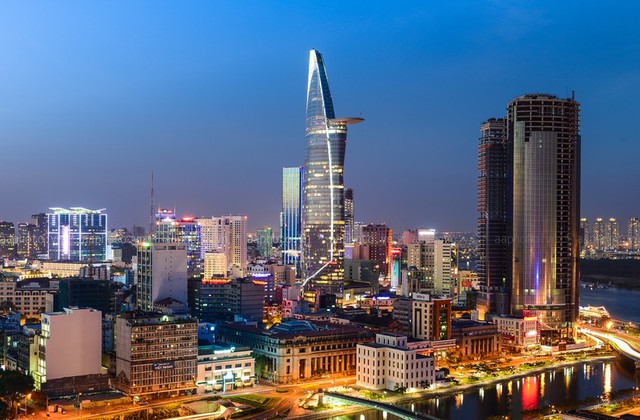
Ho Chi Minh City is the core and growth center of the Southeastern region.
The planning boundary of this region includes the entire administrative boundary of Ho Chi Minh City and 5 provinces: Dong Nai, Binh Duong, Ba Ria – Vung Tau, Binh Phuoc, and Tay Ninh.
By 2030, the Southeast becomes a modern and industrialized region
The goal of this project is that by 2030, the Southeast will become a civilized and modernized region, overcoming the threshold of high income, where the material and spiritual life of the people leads the whole country; become the largest dynamic growth in the country, with high growth rate; a center of science, technology, and innovation, high-tech industry, logistics, and a highly competitive international financial center. The region will also lead the way in renewing the growth model, digital transformation, developing the cultural, social, educational, training, and medical sectors, developing a green economy, reducing carbon emissions, and adapting to climate change. The Southeast will rapidly develop a modern, intelligent, and green urban system.
The Southeast is a pioneer in the digital economy, digital society, a center of economics, finance, trade, culture, education, science, and technology in the country; an international financial center where international financial institutions and large corporations gather; which holds a prominent position in the Southeast Asia region and develops on par with major cities in the Asia region.
GRDP per capita reaches 8 – 9% per year
In terms of economy, the Southeast strives for an average GRDP growth rate of 8-9% per year from 2021 to 2030. The GRDP per capita in current prices will be about 380 – 420 million dong, equivalent to 14,500 – 16,000 USD.
The service sector will account for approximately 41-42% of the GRDP; the industrial and construction sectors 45-46% (manufacturing and processing alone account for approximately 33%); the agricultural, forestry, and fishery sectors will account for 2-3 %; and product tax minus subsidy 10-11%.
In terms of society, the Human Development Index (HDI) will reach above 0.8. The rate of trained workers with degrees and certificates will reach about 40-45%; the unemployment rate will remain below 3% …
By 2050, the Southeast will have a modern and synchronous infrastructure
By 2050, the Southeast will become a developed region with high income; with strong economic potential, modern economic structure; a center of science, technology, and innovation, high-tech industry, logistics, and an international financial center among the leading in the region and the world; with a modern and synchronous infrastructure. It will develop in harmony between economy, culture, society, environmental protection, and response to climate change …
The total GDP growth rate in the region during the period of 2031-2050 will reach approximately 7.5% per year, with the GRDP / capita reaching approximately 54,000 USD by 2050.
Key tasks and breakthroughs during the planning period
The Southeast will accelerate the economic restructuring of the region associated with the renewal of the growth model, creating breakthroughs to improve productivity based on science, technology, innovation, and digital transformation. It will develop modern industries and services as new growth drivers such as the semiconductor industry, chip manufacturing, financial services (associated with the formation of an international financial center), and logistics.
To fundamentally establish a framework for synchronous, modern, intelligent infrastructure, focusing on transportation infrastructure, urban infrastructure, energy infrastructure, digital infrastructure, social infrastructure, irrigation infrastructure, natural disaster prevention and control, and adaptation to climate change. Basically solve traffic congestion, flooding, and environmental pollution. Promote urban development associated with the orientation of developing a public transport system (TOD).
Focus on developing the southern economic zone (the national economic zone) to become the leading economic center in the country and the Southeast Asia region. Build Ho Chi Minh City into a modern, intelligent metropolis that leads and creates spillover effects, connects urban areas, is competitive enough, integrates regionally and internationally, and plays an important role in the urban network of the region.
To form and develop economic corridors, of which priority will be given to the North-South economic corridor, the Moc Bai – Ho Chi Minh City – Bien Hoa – Vung Tau economic corridor, and industrial – urban – service belts associated with Beltway 3 and Beltway 4 of Ho Chi Minh City; efficiently connect seaports, airports, international border gates, major commercial hubs, cities, and economic centers, and serve as the basis for reorganizing the development space of the region.
Strengthen intra-regional and inter-regional linkages to ensure efficient use of resources and enhance the region’s competitiveness…












